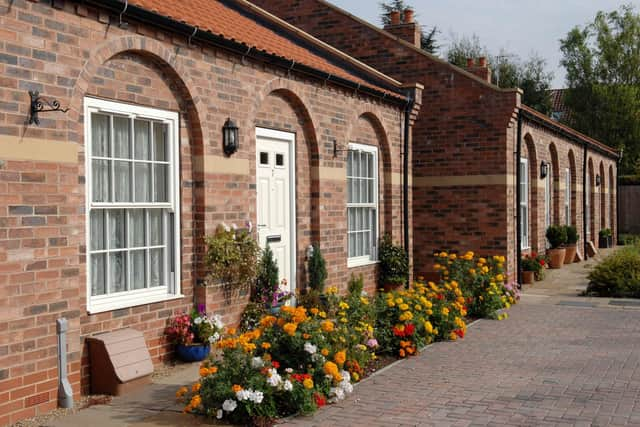200-year-old Yorkshire almshouse charity changes name and abolishes waiting list for homes as part of modernisation drive
Beverley Consolidated Charities was formed out of an amalgamation of historic almshouses, hospitals and gentlewomen’s homes that were previously run by separate trusts in the early 20th century.
The organisation, which owns over 100 properties around Beverley, some over 150 years old, will now be known as Beverley Housing Charity following fears that eligible residents were not aware of its role and work.
Advertisement
Hide AdAdvertisement
Hide Ad‘Alms’ in the form of housing relief were traditionally given to elderly people in need, many of them widows. The current criteria for a tenancy is that an applicant must be over 60, have lived in Beverley for at least 10 years and not own a property.


Chief executive Andy Barber said: “Taking the decision to rename such a well-established charity is never to be taken lightly. However, over the years, the communication of our offer to local people had become unclear, meaning some people with a genuine housing need were potentially missing out on high-quality accommodation, which is needed in Beverley now, more than ever before.
“For some people, circumstances can change unexpectedly. During difficult and challenging times we can offer a home and a community to be part of. BHC is here for those who have reached retirement age, have lived in Beverley for 10 years or more and are in financial need.
“Working with our existing residents, trustees, team, and partners we have created a new 10-year plan, enhancing our offer to those already benefitting from the charity, as well as reaching out to those in need, aiding independence in later life, helping people to live not just exist.”
Advertisement
Hide AdAdvertisement
Hide AdSince the traditional waiting list system was abandoned, cases are assessed individually and tenancies are sometimes granted within weeks. Fees are kept significantly below the market rate.
Chair Richard Miles added: “The new name and identity gives us a platform to communicate our core messages further. Many in the past have called us Beverley’s best kept secret, but we fail people if we remain a secret.
“We no longer operate a waiting list, instead, when a person approaches us for their own housing need, or that of a loved one, we look at each case individually to assess the circumstances. In some cases, residents have been able to move within a matter of weeks.
“Many private landlords are choosing to sell their properties or raise rents due to interest rates increasing; our offer is based on quality housing and fair monthly maintenance fees, not rents, which in most cases are at least 25 per cent cheaper than current private rental rates for like-for-like properties in the area. The maintenance fee helps us to keep the property at a high standard and residents happy and independent for longer."
Advertisement
Hide AdAdvertisement
Hide AdThe almshouses are a range of one- and two-bedroom properties and there are currently 220 residents. There are bungalows, houses and apartments, some in modern developments. The charity arranges activities such as day trips and Christmas lunches. Historic properties tend to be in the town centre, with new housing aimed at recently-retired tenants on the outskirts.
